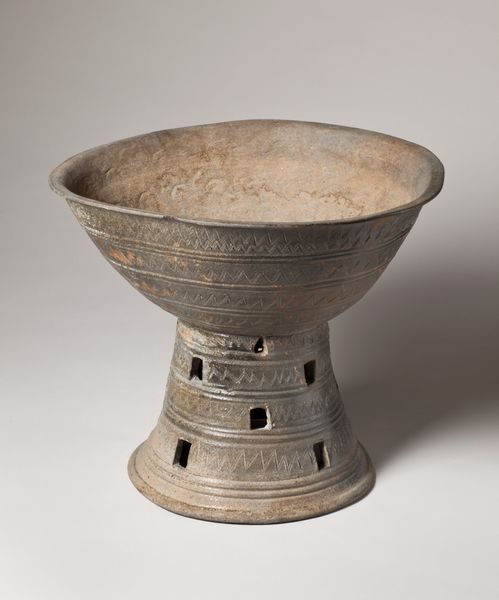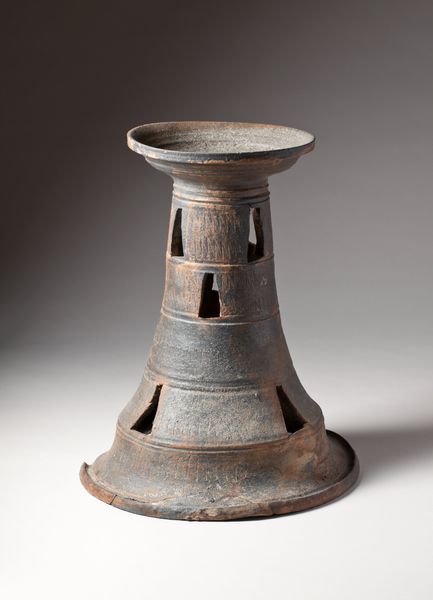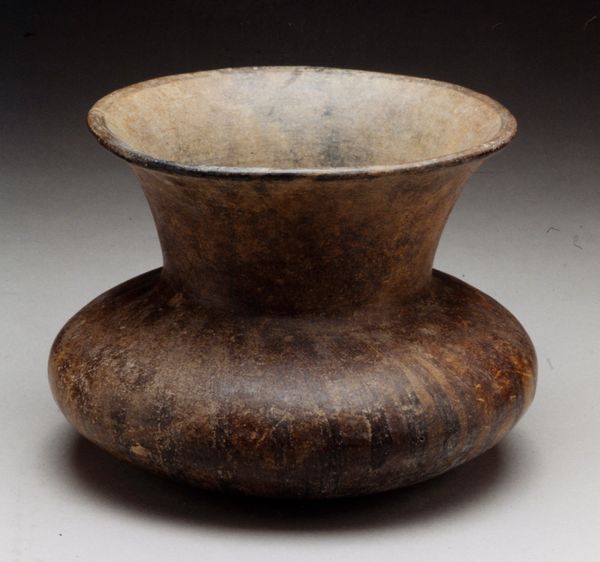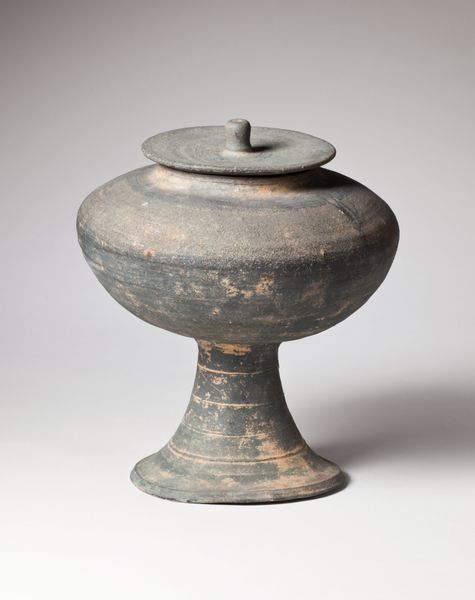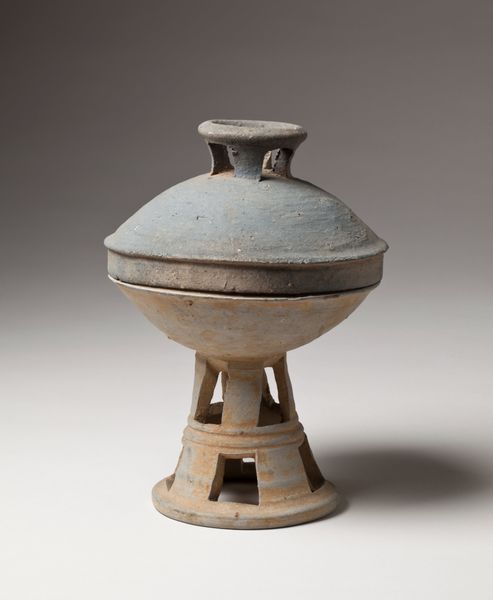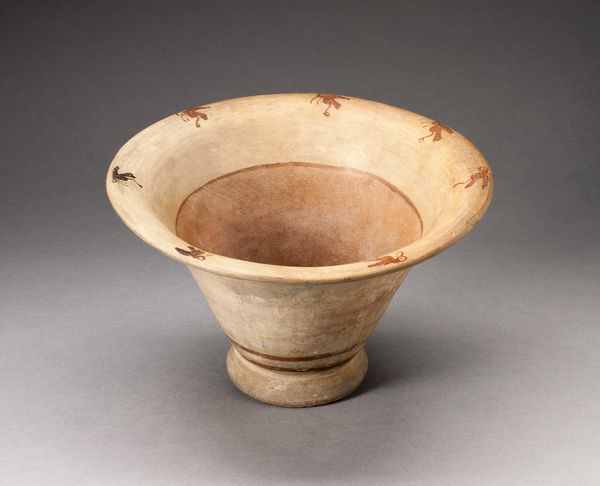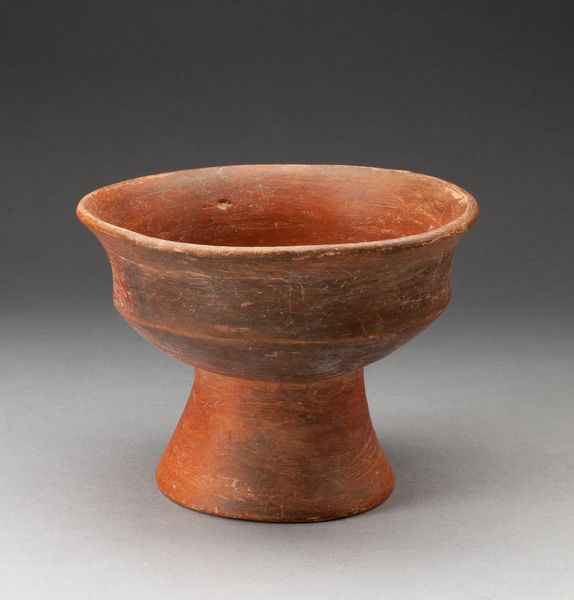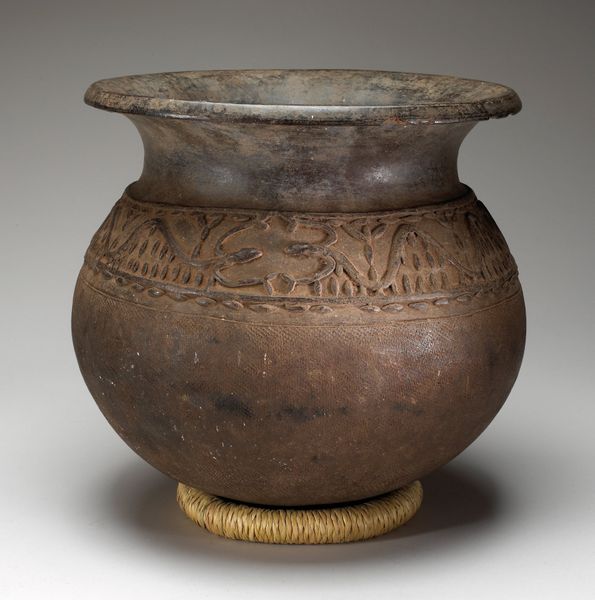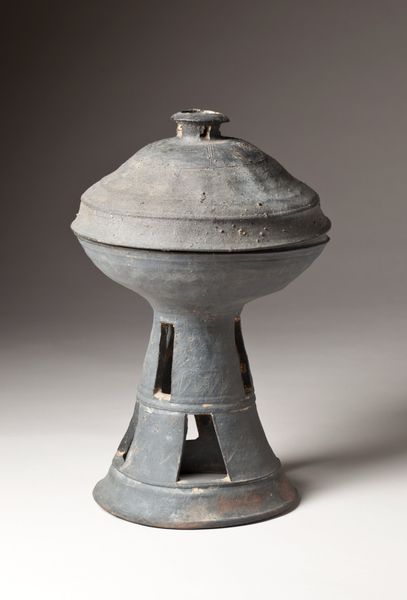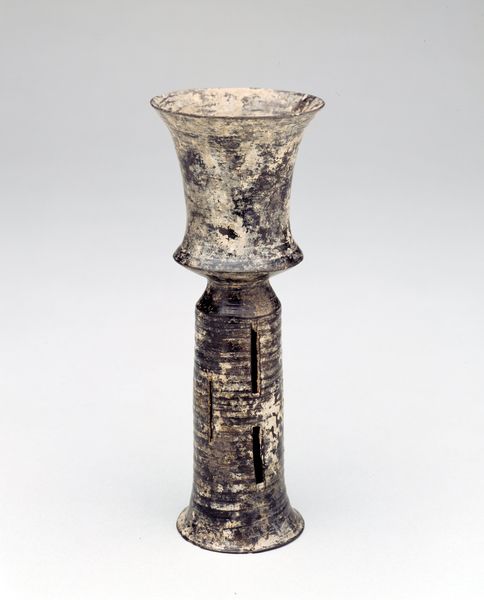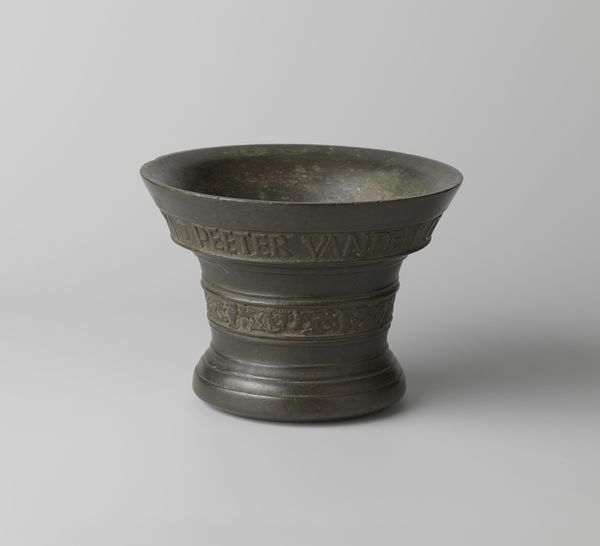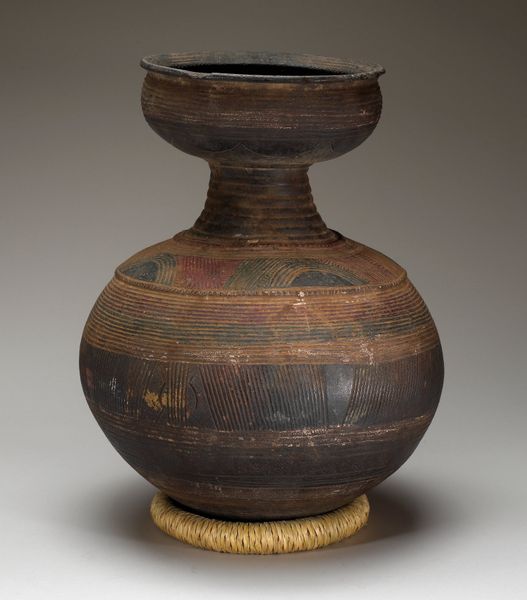
ceramic, sculpture
#
ceramic
#
form
#
geometric
#
ancient-mediterranean
#
sculpture
#
ceramic
Dimensions: 13 1/4 × 14 7/16 × 14 1/4 in. (33.66 × 36.67 × 36.2 cm)
Copyright: Public Domain
Curator: So, here we have a ceramic "Tall stand with perforated base," created around the 5th century. It resides right here at the Minneapolis Institute of Art. What's your first impression? Editor: My first thought goes to…light and shadow. I mean, look at those perforations—they’re almost like little windows cut into the form. It gives this ancient piece a strangely modern feel. Curator: It’s true; it plays with geometric forms. And it is deceptively complex; each of those little apertures had to be meticulously carved away *before* the firing, imagine the patience! What kind of labor would be needed for a common purpose vessel like this? Editor: Absolutely! And let's not forget that working with ceramics, especially in ancient times, was really a communal process, right? Clay had to be sourced and prepared. How it was then used and made part of some societal, political or everyday act is more than just making things by hand. The work probably had cultural or trade value. Curator: I love that you mention community. It’s not hard to envision groups gathering around something like this, right? The play of candlelight dancing through those cutouts creates a feeling, almost sacred… a soft hum… you know? Editor: Totally. The materiality is speaking there. Imagine feeling the raw earth being transformed under the potter's hands. Considering all that collective effort, it changes your perception of it as mere "decoration" for everyday or ceremonial events.. Curator: Exactly! And look closely at the ceramic itself – the surface bears witness to time, yet the overall structure has persisted, it's got a story baked right in the very form of it. It embodies ancient innovation, patience and also skill. Editor: Well said. To think of the skill required to shape something both so delicate and robust using raw materials and fire… it puts a whole new perspective on our mass-produced lives. Curator: Indeed, examining the origins of crafted objects is grounding and also awe-inspiring. Editor: I leave with much deeper gratitude and connection to a work with so much history, labor, skill baked into it, both practically and emotionally.
Comments
minneapolisinstituteofart almost 2 years ago
⋮
This type of stand was used to support vessels for containing liquid. Because they are often found in tombs, they are believed to have served a ritual purpose, although similar stands may have also been used in a domestic setting. The series of perforations found on around the base are consistent with other found in tombs dating to the Three Kingdoms period. Square perforations such as these are associated with stands produced in Silla.
Join the conversation
Join millions of artists and users on Artera today and experience the ultimate creative platform.
